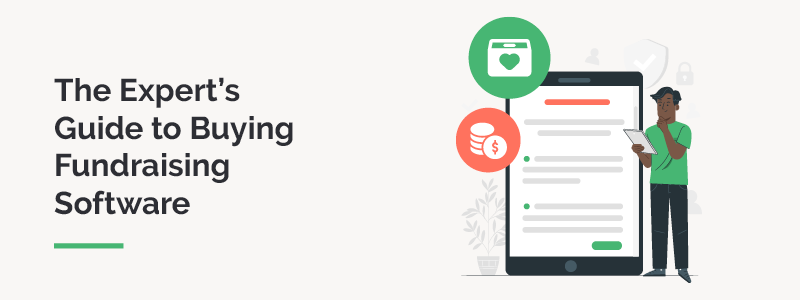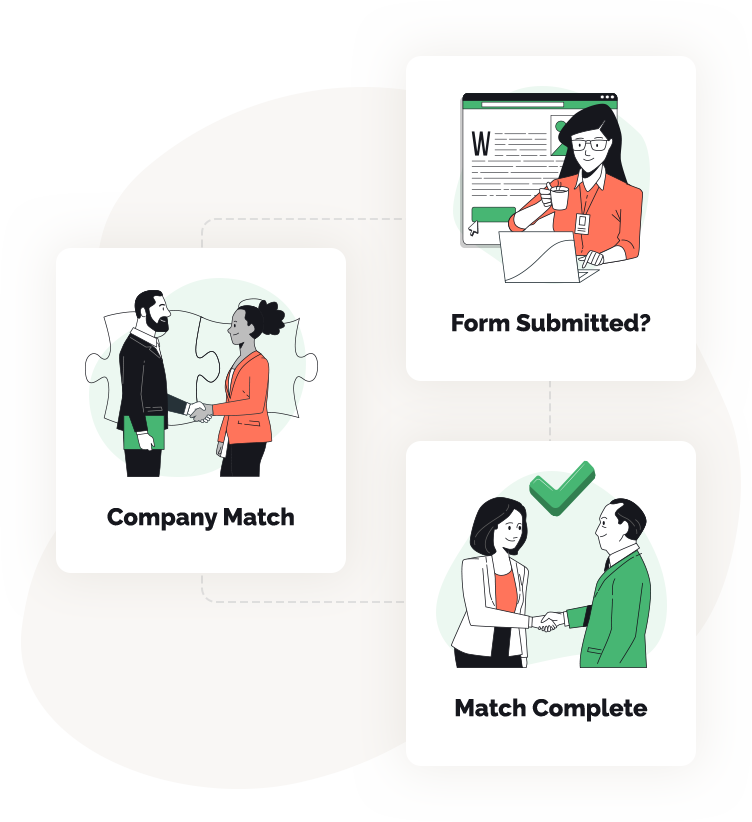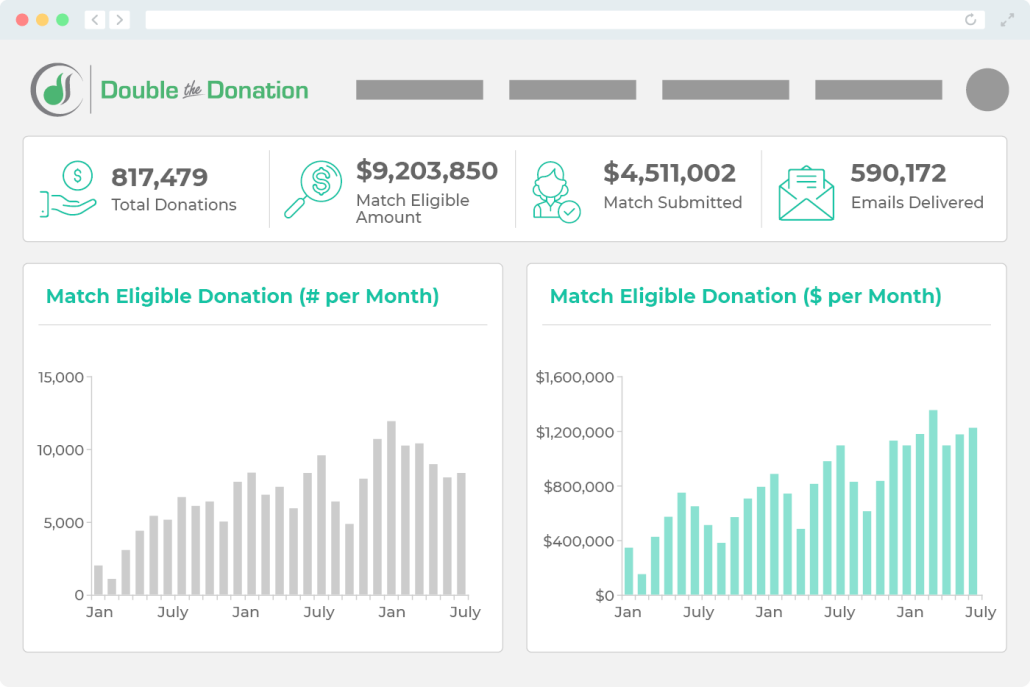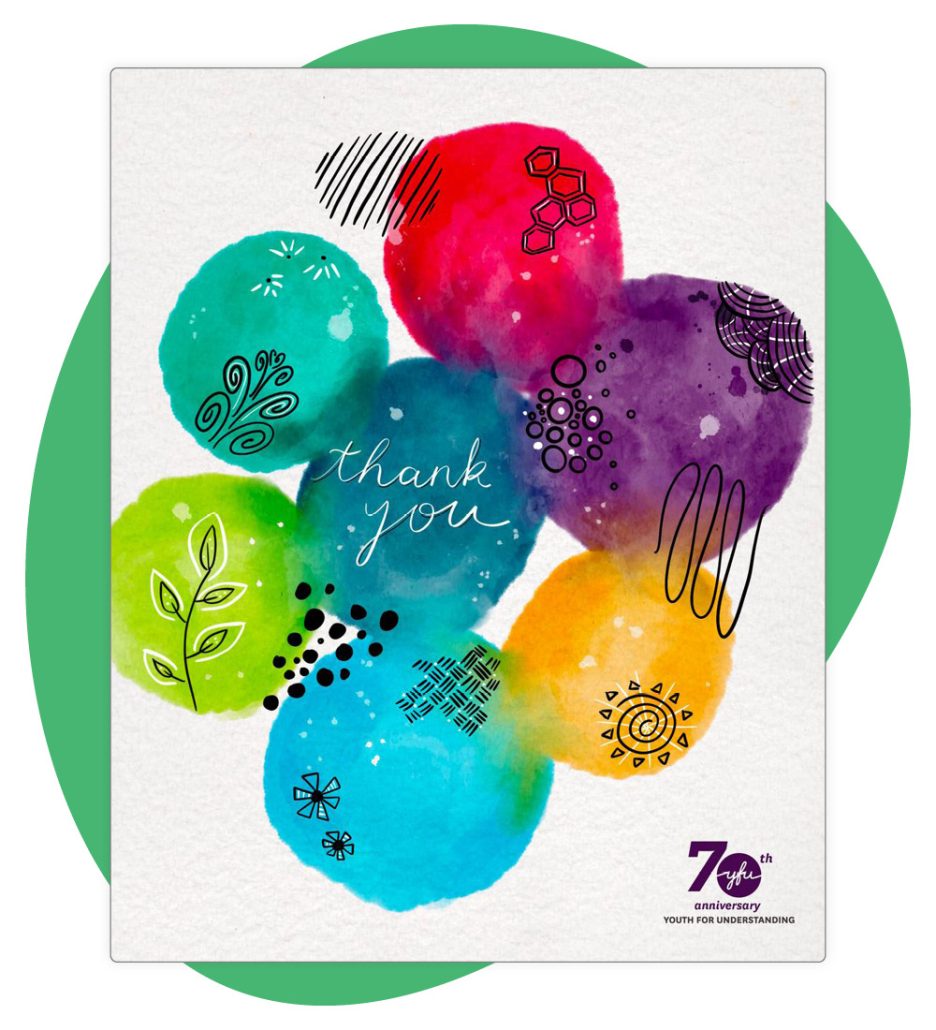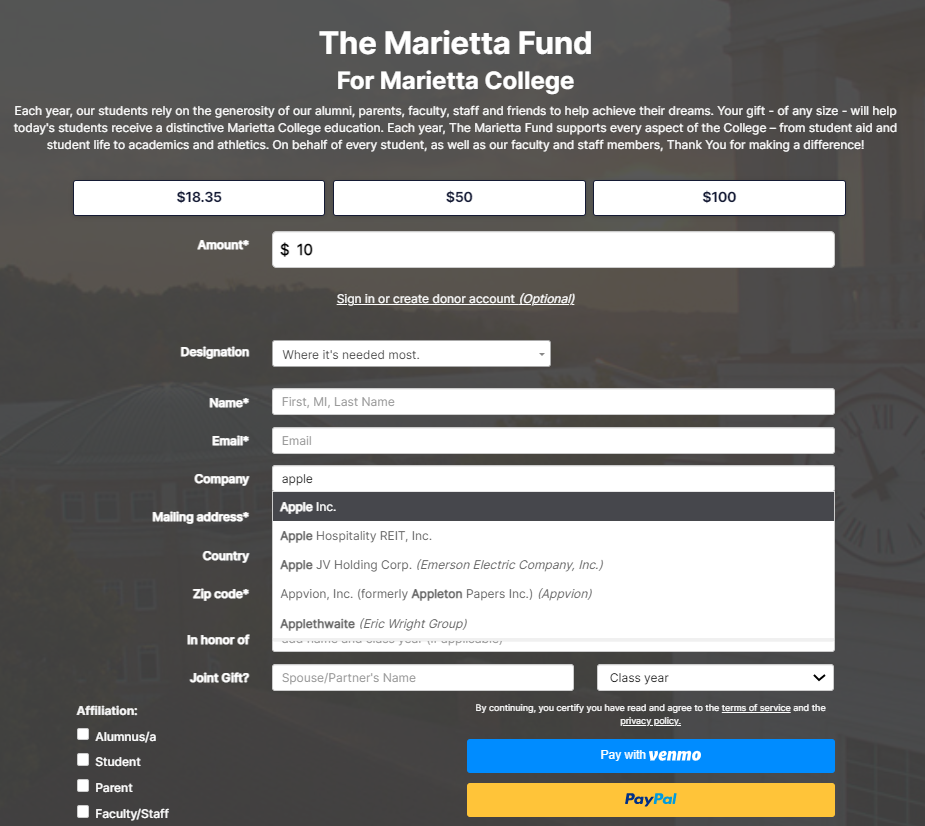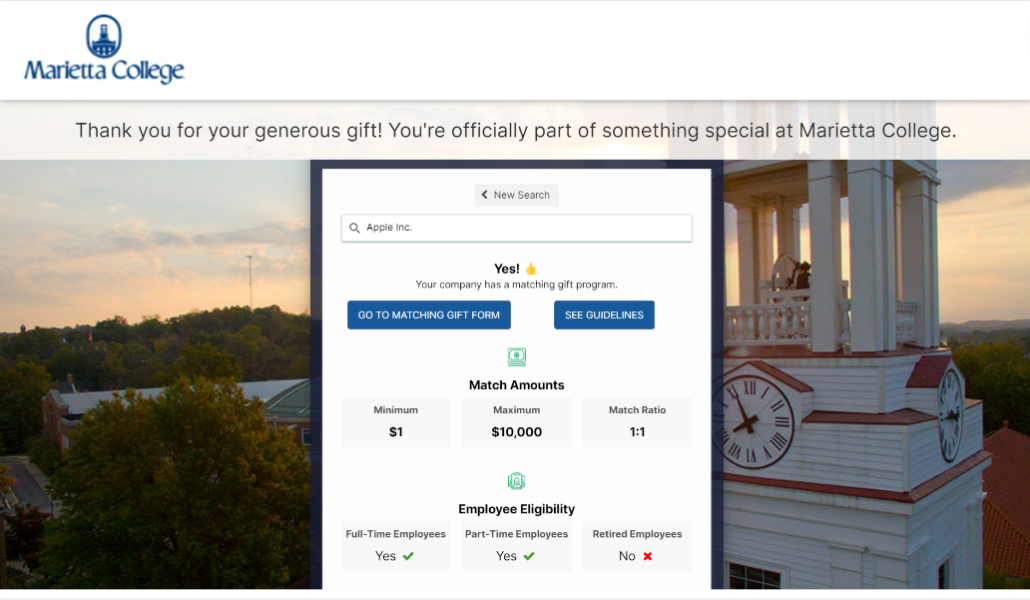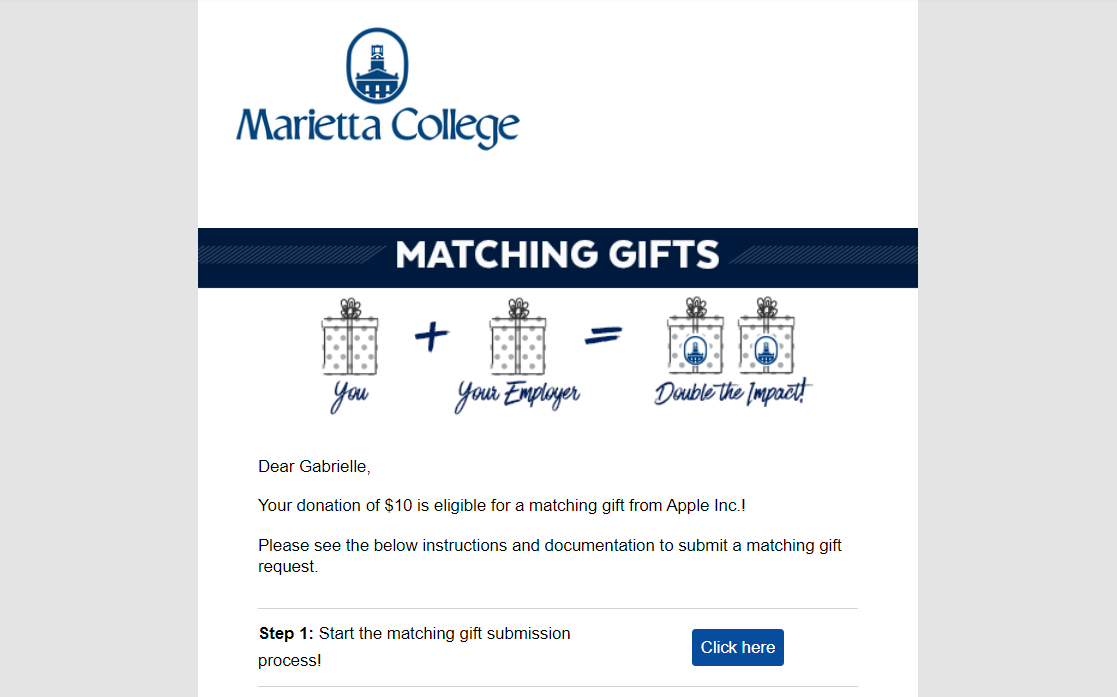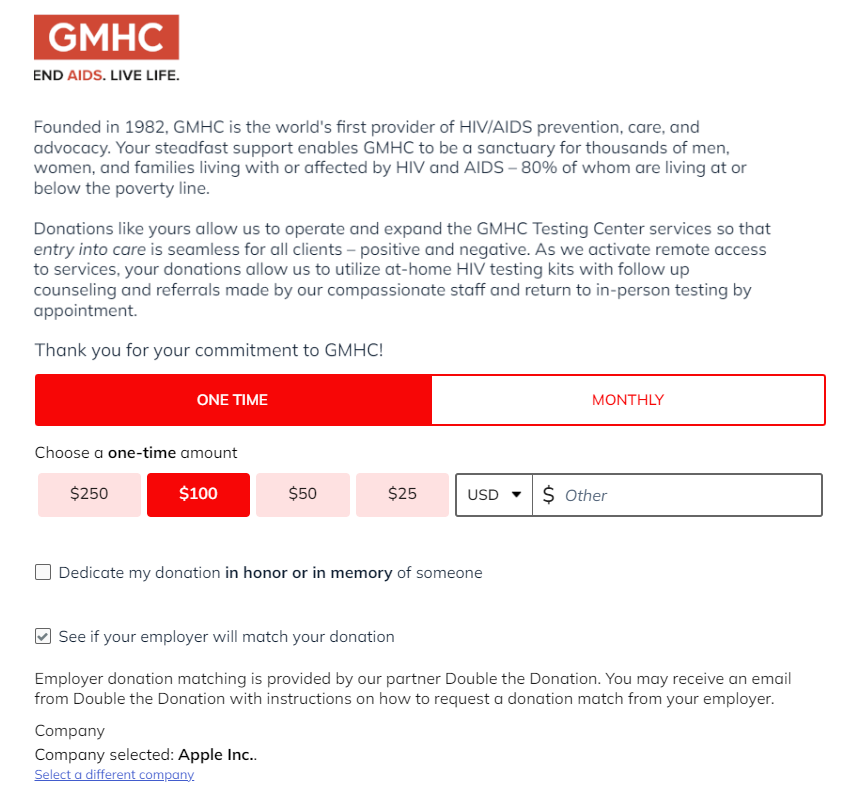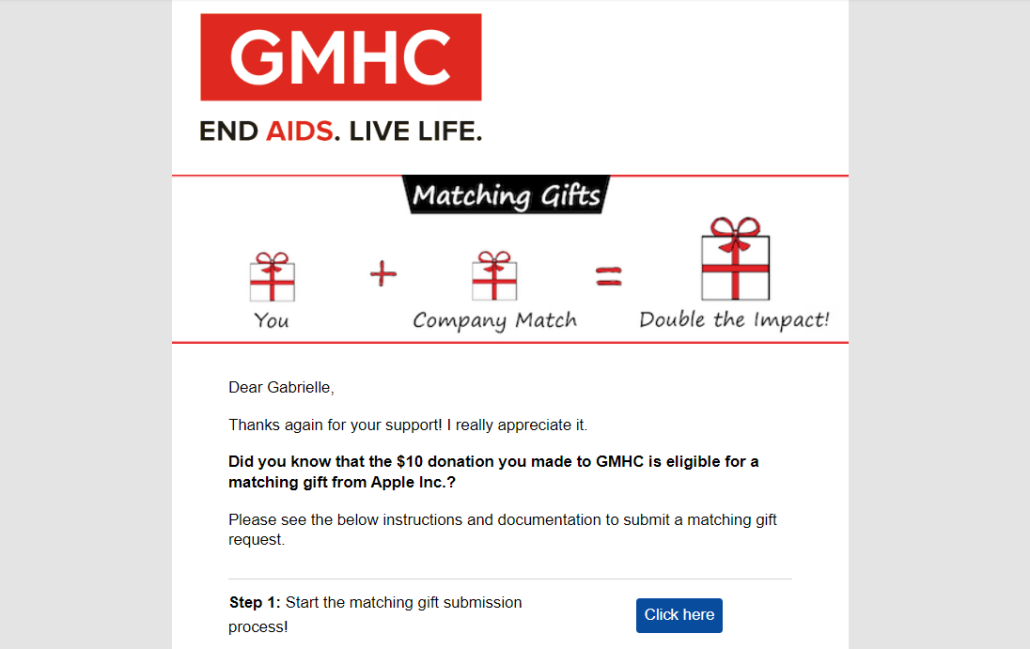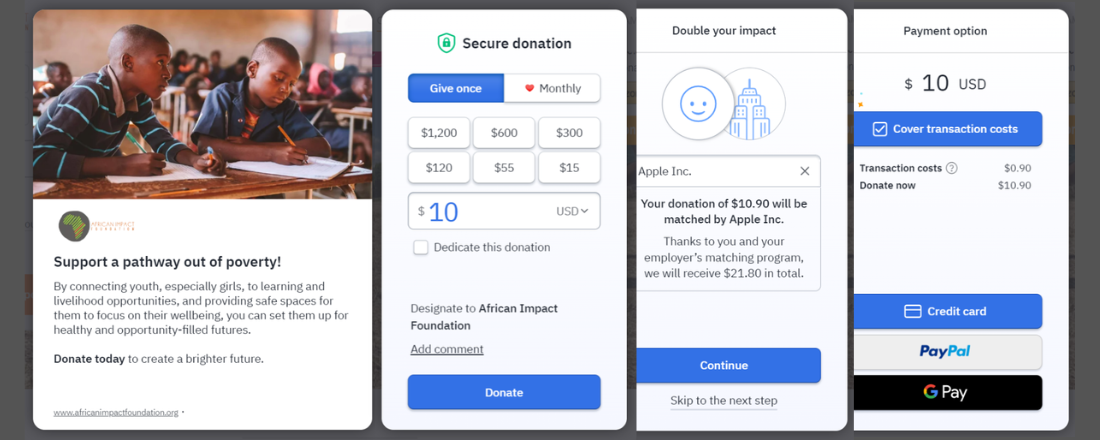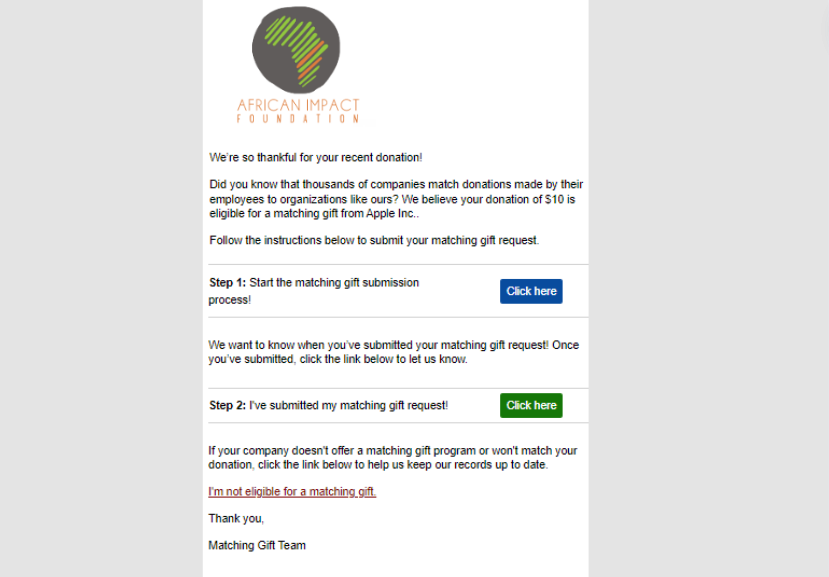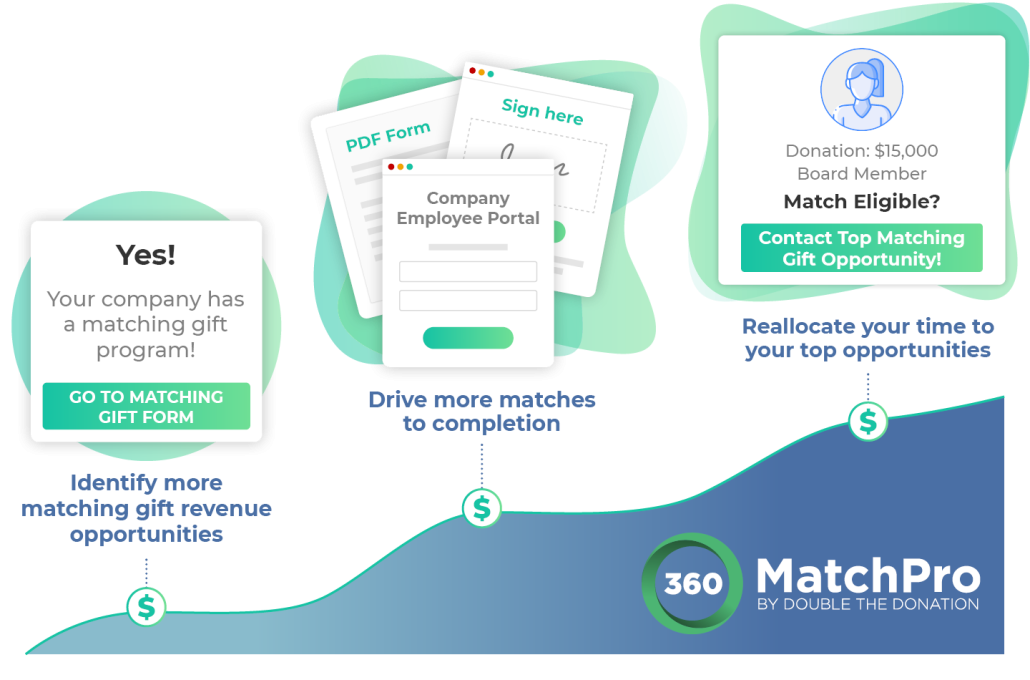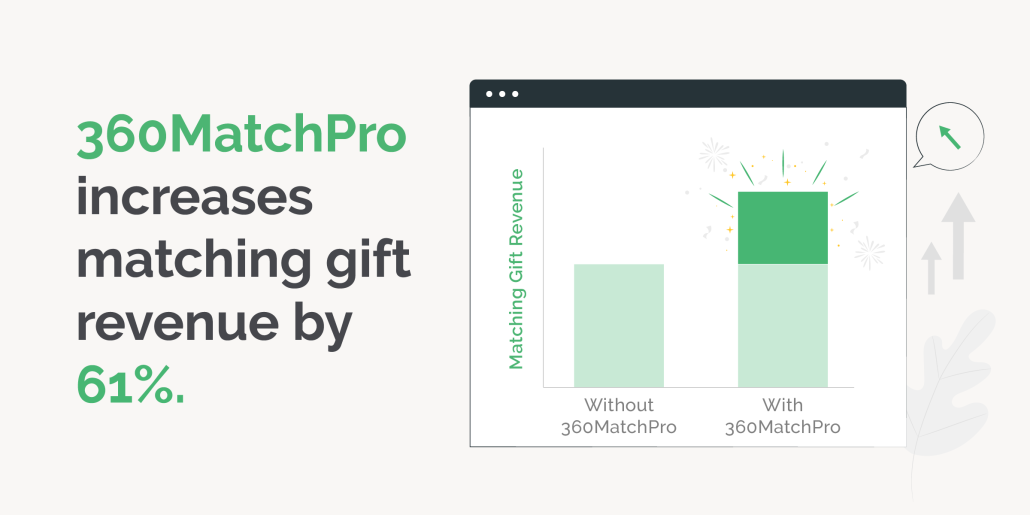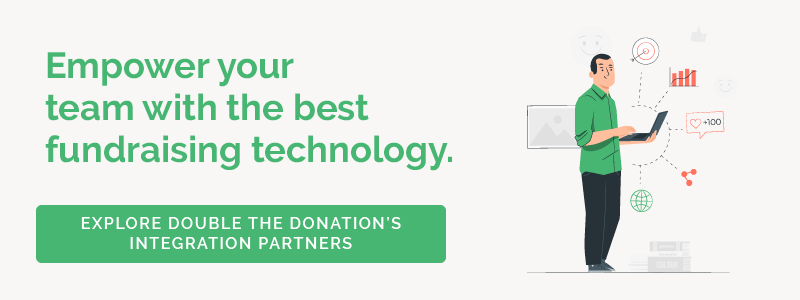The Expert’s Guide to Buying Fundraising Software
Digital fundraising is more important than ever, and even traditionally “offline” engagement efforts are being powered more effectively and efficiently by newly developed fundraising software. In the move to increasingly software-driven fundraising, it’s time for many nonprofits, schools, higher education institutions, and more to reevaluate their current fundraising toolkits.
If that sounds like you, you might be in the market to purchase or upgrade your organization’s tools—and we’ve put together this handy guide to help you along the way. Specifically, we’ll cover:
- Building Your Toolkit — Types of Fundraising Software
- Choosing Your Software — Factors to Consider
- Software Buying Inquiries — Questions to Ask Beforehand
- Fundraising Software In Action — Example Donation Flows
- Do’s & Don’t’s — Tips For Buying Fundraising Software
- Our Top Fundraising Tool Pick to Drive Engagement + Revenue
Are you ready to jump in and learn about how fundraising software can impact organizations like yours—and what you should look for if you’re in the market? Let’s get started.
Building Your Toolkit — Types of Fundraising Software
An optimized nonprofit fundraising toolkit will likely contain tools spanning a range of functionalities and purposes. While you might see a number of these solutions bundled into “all-in-one” type platforms, other providers can make the tools available via “a la carte” offerings.
That said, you’ll ultimately want to have access to each of the following types of nonprofit fundraising software to help aid in your overall efforts.
Online Donation Forms
One of the most basic—and essential—tenets of an optimized fundraising strategy is an organization’s online donation forms. These resources allow nonprofits to collect donations online with ease.
The best donation pages also empower fundraisers to:
- Manage multiple online giving campaigns;
- Offer suggested (or custom) donation amounts;
- Accept gifts from desktop computers, mobile devices, and more;
- Match their donation form branding to the organization;
- Facilitate one-time or regularly recurring gifts;
- Collect additional donor information through custom form fields;
- Enable matching gift functionality through Double the Donation partnerships;
- Integrate with other nonprofit solutions.
Peer-to-Peer Fundraising Pages
Peer-to-peer fundraising campaigns can be some of the best ways to bring existing donor engagement to new levels while simultaneously expanding the reach of your audience. Luckily, there are a number of peer-to-peer fundraising software available that should enable your organization to:
- Equip volunteer fundraisers with customizable campaign pages;
- Add images and other fundraising updates;
- Spread the word with social sharing tools;
- Track fundraising progress toward goals;
- Prioritize an accessible and easy-to-use giving process;
- Integrate with other nonprofit solutions.
Payment Processors
In order to accept donations and other payments online, you’ll need to have payment processing software in place to facilitate the transaction behind the scenes. This tool essentially functions as a mediator between the organization, the donor, and their financial institution.
An effective payment processor typically encompasses the following functionality, empowering nonprofit organizations to:
- Process nonprofit contributions through multiple payment methods;
- Offer a simple user interface;
- Produce ready-built and custom reports;
- Maintain high levels of payment security standards;
- Integrate with other nonprofit solutions.
Data Management Systems
Your internal team powers your nonprofit and puts you on the course to fulfilling your mission—but there’s a lot for them to keep track of. Ensure your fundraisers are supplied with the tools they need to improve operations through a robust donor data management system.
Also known as a CRM (or constituent relationship management tool), your donor database should allow your team to:
- Maintain detailed supporter records with constituent engagement histories;
- Add helpful notes within donor profiles;
- Segment your supporter base for targeted communications;
- Automate administrative tasks and donor outreach;
- Easily generate robust reports and data analytics;
- Integrate with other nonprofit solutions.
Workplace Giving Software
Tons of available workplace giving revenue is left on the table each year—including more than $4 to $7 billion in unclaimed matching gifts alone. Luckily, dedicated workplace giving software helps organizations identify qualifying opportunities and drive more matches to completion to increase overall funding.
Keep in mind that the most successful fundraising organizations leverage these tools to preserve their teams’ time and resources while simultaneously increasing individual and corporate giving. After all, workplace giving programs like matching gifts and volunteer grants empower nonprofit donors to do more for the causes they care about without having to reach back into their own wallets to do so.
This type of fundraising software also enables nonprofits and other groups to:
- Market matching gift program opportunities to donors and supporters;
- Locate detailed information about matching gifts and volunteer grants;
- Leverage an autocompleting search tool to identify employment information;
- Trigger automated outreach to provide valuable matching gift program insights;
- Ensure no matching gift falls through the cracks with timely follow-up cadences;
- Integrate with other nonprofit solutions.
Because lack of awareness is a primary roadblock facing matching gift and other workplace giving success, the right software is a must-have for organizations looking to make the most of the opportunities. Not to mention, this solution integrates seamlessly into your existing fundraising strategy—and works alongside your other giving tools to elevate success on just about every avenue.
Nonprofit Event Tools
Hosting a fundraising event is often one of the most effective ways to bring in new supporters, boost donor engagement, and increase fundraising revenue. And nonprofit event software can streamline the entire experience from planning, hosting, and wrapping up your event initiatives.
Specifically, the best event fundraising tools should make it easy to:
- Craft online event pages and/or microsites to promote upcoming opportunities;
- Offer free or paid ticketing options;
- Organize engaging in-person, virtual, and hybrid experiences;
- Facilitate digital bidding at auction events
- Collect additional donations beyond ticket sales;
- Integrate with other nonprofit solutions.
Donor Acknowledgment Software
Appreciating your donors is a critical component of nonprofit fundraising—especially if you’re looking to steward long-term relationships with them. Thus, be sure you have some kind of donor acknowledgment or recognition software in your fundraising toolkit.
While a regular email or thank-you letter can make do in a pinch, we recommend elevating your gratitude strategy with unique and engaging acknowledgments—like eCards!
Regardless of what you choose, your donor recognition software should empower your team to:
- Easily match your nonprofit’s existing branding style, including fonts, images, and colors;
- Send acknowledgments in seconds;
- Save money without shelling out funds for stamps, envelopes, printers, and ink;
- Offer multiple digital communication channels, including email and SMS;
- Customize communications to cultivate personal donor connections;
- Track digital thank-you notes to determine when supporters interact with your outreach;
- View other engagement statistics to gauge successes.
Choosing Your Software — Factors to Consider
When it comes to any type of fundraising software, there are a number of factors that go into making the right buying decisions. Together, these elements can provide a comprehensive look at the scope and abilities of your potential provider or product.
As you explore various software options, we recommend making detailed notes on the following components of each choice:
Functionality
Fundraising software is a broad term that can encompass many different types of platforms and features (like those highlighted above). That said, make sure you’re buying software that includes all of the necessary functionality for your organization and its needs.
At the same time, consider beforehand what you can live without. For example, if your organization has a ton of awesome event fundraising ideas, but isn’t so big on advocacy, consider forgoing the advocacy features in favor of a software with excellent event planning capabilities. Or perhaps you’re looking for a new CRM software, and you already have a donation platform that you love. In that case, you can look for exclusively database solutions that might not offer a built-in online giving tool.
Donor Experience
Your organization’s donors are most typically going to be the end user of your fundraising software. For example, they’re likely the ones who fill out your nonprofit’s online donation forms, participate in a peer-to-peer giving campaign, or interact with your matching gift database search tool.
That said, it’s important to prioritize fundraising software that makes their experiences as quick, easy, and painless as possible. If a process is too long, drawn out, or otherwise complicated, even your most dedicated supporters may consider abandoning their gift. On the opposite note, a seamless giving experience affair will keep donors coming back to support your cause time and time again.
Back-End Ease-of-Use
Another important element of any software has to do with its ease of use on a day-to-day basis—and this can depend on the organization itself as much as the software product in question. After all, one organization’s staff can have vastly different technical skill levels than the next.
All in all, organizations should prioritize a level of complication when it comes to their tech solutions that makes sense for their team. For example, if your nonprofit employs developers, a custom-coded solution might make sense. On the other hand, if no one on your team is particularly technical, you’ll likely want to prioritize an off-the-shelf fundraising platform for ease of use.
A solution that’s too technical—and ultimately inaccessible—will only complicate operations and discourage staff members from using it altogether. Remember: it’s not just the software but what you do with it that matters.
Scalability
Another key consideration when it comes to fundraising software (or any technology, for that matter) is the solution’s scalability.
For example, as your internal fundraising team grows, will your software enable enough authorized users? Be sure that all staff members who need to use your fundraising platform have access to do so—including taking into account where your team might be in one or multiple years.
Not only that, but when it comes to CRMs and other donor management systems, you’ll want to confirm that your potential platform can hold all of your donor data with significant room to spare. If you anticipate that your nonprofit will see major growth in the near future, you’ll certainly require a platform that has room for expansion. This will allow your new tools to scale up alongside your organization without breaking the bank—or requiring a software platform switch too quickly.
As you make your buying decision, keep in mind that organizations that jump at free or very low-cost solutions often find that their needs have rapidly out-scaled the capabilities of the software. If that happens, you’ll be back at software-buying square one with yet another data migration to handle—so it’s typically best to make a thoughtful, future-focused decision from the beginning.
Integrations
Even the most comprehensive software solutions might not have all of the day-to-day features your organization needs to function. In order to unlock heightened capabilities, you may have to integrate additional programs or systems to assist your operations.
Here are a few common scenarios when you might need integrations:
- An organization might have specific or niche needs, where they may prefer to choose their own software solution (for example, a particular payment processor or email application) to best complement their existing tools.
- The software company you’re buying from doesn’t offer tools to facilitate one of your major operations (e.g., corporate matching gifts), so you need to integrate a more specialized fundraising software (i.e., a dedicated workplace giving platform).
If you find that you’ll require a software integration, be sure to communicate your needs to your potential new vendor. That way, they can help determine the compatibility between the two systems. Perhaps there’s a native, ready-built integration—in which case, great! On the other hand, if it’s difficult or impossible to integrate two solutions, it might be time to reconsider your priorities.
Cost
It’s important to go into any major purchase with a budget in mind, and software is no exception. Before you take a deep dive and begin evaluating specific platforms, you should first decide how much your organization is willing to spend—taking into account base price, startup costs, and any additional ongoing fees.
The base price is the vendor’s list price on the platform you want to buy and will be what the majority of your investment will go toward. It encompasses the core functions of the platform but usually excludes any expansions or optional add-ons.
However, it’s important to ask exactly what it includes to make sure you’re getting all of the capabilities you need. If the base price doesn’t include one or more of your organization’s necessary features, be sure to consider how much the excluded features cost to add on.
From there, you might run into additional hidden costs such as these:
- Staff training;
- Maintenance fees;
- Online donation processing fees;
- Future updates, integrations, or expansions.
Going into the buying process with a clear budget will naturally limit your options, which makes the selection process a little easier. It also, of course, ensures that you won’t be spending more than you can actually afford.
Customizability
When you make your fundraising software purchase, you’re likely aiming to locate a solution that complements your organization’s needs and operations out of the box. Even so, many platforms remain particularly customizable and are open to being further tailored to fit your cause.
For the most optimal fundraising experience, consider software with expansive customization options—especially when it comes to the capabilities that most influence your major operations.
In your search, you may find that software customization can apply to many different features, including:
- Supporter profiles;
- Donation and sign-up forms;
- Email marketing templates;
- Reporting and tracking tools;
- And more.
With customizable features, you can essentially mold your software to better fit your organization’s unique needs. Your software will feel like it was custom-made for you, more effectively driving impact toward your overall goals with ease.
Support
Most technology solutions will require some sort of support—not only to get up and running with the tools but also to aid in maintaining effective operations over time.
When you first get started with a new fundraising platform, you and your team will likely need to go through some sort of training or onboarding process in order to get set up and become proficient with the new tools. All platforms should have some kind of IT support, but the level of instruction and support can vary drastically from company to company, so it’s an important consideration in your vendor search.
Here are a few general questions for your fundraising software company in regard to team-wide training:
- How long is the training process?
- How is training administered (virtual, on-site, etc.)
- What is the frequency of lessons?
- What proficiency level does your training cater to?
- What are the associated costs?
From there, it’s important to consider ongoing support availability as well. After all, even the technology whizzes of the nonprofit world will most likely need a little assistance from time to time when it comes to their fundraising software.
Compare software support options by making the following inquiries before you purchase:
- Do you offer IT support?
- How do I get in contact with support if there’s a problem?
- What’s the typical response time?
Keep in mind that the better you and your team understand your software, the more functional it’s going to be, so be sure to locate a provider that offers the kind of support you need. With the right level of aid at your fingertips, your software will be functioning at top performance for years to come.
Software Buying Inquiries — Questions to Ask Beforehand
When considering software options, it’s important to think about your organizational operations and determine what is needed in a solution in the first place.
To make sure you locate a software that is the all-around right fit, you’ll want to have a number of questions on hand to explore. Here are a few that we recommend!
How difficult are the initial setup and data transfer?
Because you’re buying new software in the hopes that it will help you elevate your organization’s operations, chances are you’ll need to account for an initial software setup and data transfer from your previous solution.
Considering your data is the key to building and maintaining strengthened donor relationships and better optimizing your fundraising efforts, it’s essential that it translate to your new platform uncorrupted.
To ensure that this will be the case, first determine that it’s possible to transfer your data to the new system in its proper format. Then, consider how you’ll prepare your data for this process. If it turns out that transferring your data from one system to another requires a lot of time and labor on your part, consider whether the software offers other benefits that make it worth the effort.
From there, it will be time to think about actually getting your solution up and running. There are many steps to consider when setting up your new software, which might include:
- Installation;
- Customization;
- Integrations;
- Data cleaning;
- Data testing;
- And more.
Don’t forget to inquire about the overall length of the setup process, as well as any associated onboarding costs. If you decide to set up on your own (without the guidance of the software provider or consultant), make sure that you’ll have access to help if you end up running into any difficulties doing so.
Does it have the integrations my organization needs?
Remember—integrations are one of the most essential pieces of an effective fundraising software ecosystem. Without the right partnerships between your tools, your investments will be limited in scope and efficiency. Empowered with software integrations, however, your technology is able to function as a cohesive unit, rather than a collection of disparate tools.
Therefore, one of the most important questions you can ask when it comes to selecting a new software solution is “Does it offer the integrations my team—and technology ecosystem—needs?”
For example, Double the Donation integrates with 70+ of the industry’s largest nonprofit technology providers, including donation platforms, peer-to-peer software, CRMs, corporate giving solutions, and more. If you work with (or plan to work with) Double the Donation’s tools, we strongly recommend exploring the giving tools with which we partner.
How do I maintain effective use of my software over time?
The buying process doesn’t just end the minute your software is set up, and your staff knows how to use it. In order for your software to keep running at its highest capacity, you need to think about how you’re going to maintain it over time.
Before making your decision, ask if the software has any built-in features to help keep your data clean and up-to-date. This is one instance where automation can make a big difference. Automated features like deduplication can help maintain a lean and accurate database, ensuring your records never become so messy that they’re out of hand.
Second, make sure that your maintenance support includes installing updates—or if it doesn’t, that these updates are fairly easy to install yourself. And don’t forget to ask about the price!
By keeping your software up-to-date, you’ll get much more life out of it, ultimately leading to smoother fundraising processes over time.
What level of security does the software offer?
Chances are, your organization will be using its fundraising software to collect, store, and manage some of your supporters’ most sensitive data. Thus, it’s critical to confirm you’re choosing a highly secure platform that can protect this information properly.
For example, you might want to inquire about how much control the software gives you over user permissions. The most flexible platforms will allow you to offer some authorized users access to certain information while prohibiting others’ levels of access.
Pertaining to donor payment information, make sure you consider the highest industry security standards in your search. Consider asking about the following protections:
- PCI compliance
- SSL, or secure socket layer
- AVS, or address verification service
- Encryption and tokenization
- CVV2 verification
- IP checking
- Password security
- Multi-factor authentication
You want to confirm that your donors’ data will be kept safe and sound within your fundraising system—and you also want to ensure that supporters feel comfortable entering their payment information in the first place!
Fundraising Software In Action — Example Donation Flows
When comparing several fundraising software options, it can help to see each of the potential tools in action. We recommend getting personalized demos from each provider. But in the meantime, we’ve put together a few sample donation flows to be inspired by:
Marietta College
*Uses GiveCampus and Double the Donation
Marietta College is a private liberal arts school consistently ranked among the top colleges in Ohio. Let’s take a look at a few key components of Marietta College’s fundraising strategy and how their technology enables them to reach their goals:
Donation Page
This donation page from Marietta College is quick and easy for supporters to complete, prompting users to input basic information about their intended gifts and contact information. There are also optional fields, including employing company for matching gift programs, affiliation to the school, spouse/partner’s name, or class year, providing additional insights for the institution.
Once the form is completed, the school’s fundraising software enables donors to check out using Venmo, PayPal, Google Pay, debit/credit card, or bank transfer. Providing multiple methods for giving like so enables organizations to meet their donors where they are and drive more gifts to completion!
Confirmation Screen
After a donor submits their donation to the college, they are automatically rerouted to a gift confirmation screen. This web page thanks supporters for their generous contributions and provides detailed information concerning their employers’ matching gift programs—including eligibility criteria and how they can complete their matches.
By providing prominent and actionable ways for donors to pursue available matching gift opportunities, more matches are ultimately driven to completion, and more revenue is generated for the institution in question.
Follow-Up Email
Just a few minutes after finalizing their donations, Marietta College supporters receive customized email follow-ups directly in their inboxes. These messages contain notes of gratitude in addition to reminders about matching gift program availability, links to online submission portals, and actionable encouragement to complete their matching gift requests.
This keeps the college and its fundraising needs at the forefront of donors’ minds for longer and ultimately results in increased corporate matching revenue to amplify gift impact and help the school reach its goals.
GMHC
*Uses Classy and Double the Donation
Formerly known as Gay Men’s Health Crisis, GMHC was the world’s first nonprofit organization dedicated to the treatment and prevention of HIV and AIDS. Since 1981, GMHC has continued to provide impactful health and human services to key communities in New York.
Let’s walk through an overview of the GMHC giving experience using the fundraising software the organization currently has in place:
Donation Page
The first step involved in the GMHC donation process involves completing an online giving form made readily available on the organization’s website. Once a donor has arrived at the form, they are provided with a high-level overview of the nonprofit’s mission and vision, and are prompted to select their one-time or recurring donation amount. The frictionless process encourages giving and helps aid donors as they give to support their favorite causes.
Donors are also given the opportunity to enter the name of their employer in an optional, auto-completing search tool with the context that the individual may receive corporate matching information sent directly to their email. By incorporating workplace giving opportunities directly within the giving form, this organization is able to increase awareness of the programs and help drive more matching donations to completion.
Follow-Up Email
Soon after submitting their gift to the organization, GMHC donors receive a matching gift follow-up email informing them of their eligibility for a corporate matching initiative through their employer. This includes instructions and documentation required for the individual to submit their matching gift request, as well as a link the user can follow to keep the nonprofit up to date on the status of their corporate match! The technology essentially guides donors directly through the matching gift process, simplifying the experience and ultimately resulting in elevated match revenue for the organization.
African Impact Foundation
*Uses Fundraise Up and Double the Donation
The African Impact Foundation was established in 2008 with a mission to equip children and youth in Southern and Eastern Africa with the education and skills to uncover pathways out of poverty.
Here’s a look at how the foundation collects donations using powerful fundraising tools:
Multi-Step Donation Page
The African Impact Foundation leverages a multi-step donation form with which donors can submit their gifts to the organization. On the first page, individuals are able to select their intended donation from suggested gift sizes (or enter their own amount), as well as upgrade to a monthly recurring gift, choose a dedication or designation, or add optional comments. The fundraising software ensures there are multiple opportunities throughout the giving process for donors to upgrade their donations and further their nonprofit support.
On the next page, donors are encouraged to double their gift impact with a matching donation and are provided with access to a matching gift company search tool to name their employer (with which to identify guidelines and forms for ease of use). Then in the final step, donors are given the opportunity to cover their transaction costs and check out using a credit card, PayPal, or Google Pay.
Follow-Up Email
Using the employment information provided within the initial donation process, the African Impact Foundation’s fundraising software triggers automated matching gift follow-up emails—providing donors with access to company-specific program information and detailed next steps for submitting requests. They also use the follow-up email as an opportunity to thank donors for their support of the cause and encourage them to get their gifts matched by their employing companies.
Do’s & Dont’s — Tips For Buying Fundraising Software
As you enter the final steps in the fundraising software buying process, keep these tried-and-true tips in mind. Here are a few things that we recommend you do—and don’t do.
Don’t overcomplicate the fundraising process.
The hope is that your new software will update your organization’s current operations and better them in some way. At the same time, if the new solution appears to overcomplicate things for your team and your supporters, it’s probably not the one.
Think of it this way: buying software is like hiring a new staff member. As a key player in your efforts, you want it to complement your organization’s unique culture without flipping your current processes on its head.
Although the goal is that your software will simplify the fundraising process, it will only become more difficult if you have to drastically change the way your organization runs—or your donors give—to use it.
Learning how to use a new platform is already a big adjustment. Make it easier on yourself by finding one that shapes to fit you, not shapes you to fit it.
Do get a demo.
Often, the best way to determine if you’ve chosen the right software is to see the tools in action. That’s why most software vendors offer informational demos, allowing prospective clients to get a better idea of their product before they decide to buy.
Start by checking the vendor’s website to see if they feature any pre-recorded demo videos. Some providers may require some basic information first, then send an on-demand demo (or perhaps even a free trial) over email or through their site.
For those further along in the buying process, many solutions also offer live online demos upon request. These experiences are more personalized and can provide a closer look at how the software will work for your organization.
Don’t forget to check out the reviews.
You don’t have to go through the buying process alone. In fact, organizations that have previously used a particular software can be a huge help when it comes to deciding whether or not to buy. Because they’ve had experience with the product, they can attest firsthand to how it functions.
Before making any decisions, get online and see if you can find a second opinion. Consult reviews other organizations have provided about the software you’re evaluating. If you see certain patterns emerging regarding the platform’s strengths or weaknesses, it’s fairly safe to expect that your nonprofit will encounter a similar experience.
Do explore Double the Donation and its integration partners.
With so many fundraising software options available, it can be difficult to know which one to select for your organization. To narrow it down a bit, we recommend heading over to Double the Donation’s partnerships hub to check out the range of innovative, best-in-class solutions that we work with.
Still too many choices? Use our software search tool to filter for different platform types, verticals served, and even key functionality. In doing so, you can be sure you’re finding the right tools for your organization and equip your team with Double the Donation’s matching gift solution to drive corporate giving revenue as well.
Our Top Fundraising Tool Pick to Drive Engagement + Revenue
After the insights listed above pertaining to how to choose the perfect fundraising software for your organization, you might be wondering what our key recommendation is. If you want to make every donor dollar count while maximizing fundraising efficiency, we suggest 360MatchPro—our complete matching gift automation platform.
360MatchPro Overview
360MatchPro by Double the Donation automates the matching gift experience for nonprofits, their staffs, and their donors. This solution aims to uncover matching gift-eligible donors through multiple identification methods, trigger personalized and company-specific outreach, and ultimately drive more matching gifts to completion—with an end goal of maximizing each organization’s matching gift revenue.
The platform works by integrating with a nonprofit’s existing fundraising tools (i.e., your donation tools, peer-to-peer software, and donor management systems). When a donor gives, 360MatchPro automatically scans their provided information to determine if they are eligible for a matching gift from their employer.
If they are, the software triggers an email with company-specific instructions on how to submit their matching gift request. If their eligibility status remains unknown, outreach is sent encouraging donors to search for their employer using the embedded company search tool and follow the tailored instructions available in real time.
Plus, 360MatchPro aids fundraisers in tracking incoming matches to more accurately forecast match revenue, push forward stuck matches, and provide in-depth reporting and analytics to demonstrate matching gift success over time and locate areas with room for improvement.
Not to mention, studies show that employing a matching gift automation tool (like 360MatchPro) increases matching gift revenue for nonprofits by 61%! And it even drives individual giving as well—with 84% of survey participants being more likely to donate if a match is offered, and 1 in 3 donors indicate they’d give a larger gift if matching is applied.
This process is entirely automated, saving your organization significant time and resources. Matching gifts have never been easier!
Interested in getting started? Request a demo here.
What’s Next?
Innovative fundraising software exists to assist organizations like yours in the move to increasingly digitized fundraising campaigns. With the right tools and resources in your team’s tech stack, you’ll be able to bring in more fundraising revenue easier without a hitch.
Interested in learning more about strategic nonprofit fundraising and the solutions available to your team? Check out these additional fundraising resources below:
- The Comprehensive Guide to Fundraising Technology. This free downloadable resource dives deeper into the topic of innovative fundraising technology, best practices for making software buying decisions, and more.
- Top Peer-to-Peer Fundraising Software (What to Look For). If you’re considering expanding your organization’s social fundraising toolkit, this complete guide to peer-to-peer fundraising software provides the insights you need.
- Database of Matching Gift and Volunteer Grant Companies. The right matching gift software can elevate the rest of your fundraising tech stack. Explore Double the Donation’s comprehensive database and automation software here.
